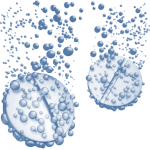Combination of Natural and Cellulose Derivative Polymers to Control Sumatriptan Succinate Release from Unidirectional Buccal Patches
Sandhya Murali, Prasanth Vv, Sanjay K Bais
Abstract:
This study aimed to develop unidirectional mucoadhesive buccal patches of sumatriptan succinate (SUS) with the aid of natural polymers by solvent casting method. The SUS mucoadhesive buccal patches were fabricated using solvent casting combined with a 32 factorial design. Sodium alginate was used as a base polymer with Carbapol 934P, Chitosan, Hydroxy Propyl Methyl Cellulose and Poly Vinyl Pyrollidine K- 30. Polyethylene glycol and propylene glycol were employed as plasticizers. The final patches were cut into 2 cm diameters, backed with a water-resistant membrane, and covered in aluminum foil until further research. Sumatriptan succinate muco-adhesive buccal patches had good physicochemical characteristics. Mass uniformity varied from 41.36% to 84.18% and the thickness from 0.2 mm to 0.4 mm. The drug loading efficiency varied from 6.0 to 9.2 mg, with some formulations showing folding endurance over 300. Water-soluble characteristics of PVP K-30 and Carbapol 934P affected swelling index, residence time and drug release. In this study, formulation SC11 showed maximum drug release of 99.51% at 160 min and 99 % permeation rate at 140 min. Stability experiments showed that SC11’s drug content, residence time, and appearance are rarely affected. The prepared buccal patches of SUS appear to be potential formulations with respect to the physicochemical characteristics and in vitro evaluation data. These buccal patches may provide better bioavailability by avoiding the hepatic first-pass metabolism and provide more patient compliance.
Keywords: Transmucosal Drug Delivery, Unidirectional Buccal Patches, Mucoadhesion, Sumatriptan Succinate, Migraine, Sodium Alginate.



